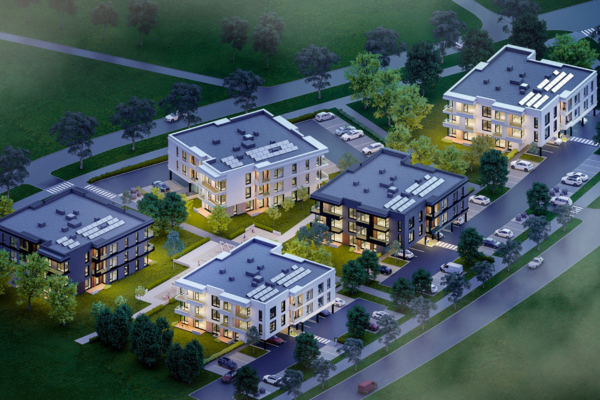On April 2nd, the annual Real Estate Development Conference organized by Äripäev brought together leading real estate developers, public sector representatives, and other industry professionals. In the panel discussion “Should We Suburbanize or Densify Our Cities?”, Janar Muttik, CEO of Everaus Kinnisvara, shared the stage with Tarmo Pohlak, board member of Nordecon AS, and architect Margit Mutso. The panel explored whether a higher quality living environment can be achieved in cities or suburban areas, and what are the broader effects of suburbanization and urban densification.
The panelists agreed that many people prefer to live in suburban neighborhoods due to the significantly higher property prices in urban areas. It was also noted that the concept of a “quality living environment” means different things to different people — for some it’s greenery, peace, and privacy; for others, vibrant city life and fast connections. As such, suburbanization shouldn’t be strongly restricted, nor should people be forced to live in cities. Although suburban development can place a heavy burden on the state budget — due to the high cost of infrastructure (roads, utilities, schools, kindergartens, public transport) — there is still a need for a clearer, shared understanding of the scope and nature of suburbanization in Estonia.
“When we talk about suburbanization, we need to talk about creating holistic living environments,” said Janar Muttik, CEO of Everaus Kinnisvara. “Suburban areas should also have smaller local hubs that include not only residential housing but also goods, services, and social infrastructure. This helps ensure quality of life and reduces commuting between cities and suburbs.” As an example, Muttik highlighted Everaus Kinnisvara’s development in Peetri, Rae Municipality, on the outskirts of Tallinn: “We’re building a comprehensive environment that includes not only residential quarters but also commercial buildings that offer various services. We are also investing in social infrastructure, such as childcare facilities.”
Advantages of Urban Densification:
-
Lower financial burden on the state
-
Use of existing infrastructure and social services
-
Smaller environmental footprint (e.g., renovating existing buildings)
-
Good transport connections
-
15-minute neighborhoods: walking, cycling, electric scooters — no personal car needed
Disadvantages of Urban Densification:
-
High property prices making urban living less accessible
-
Higher noise levels
-
Potential increase in air pollution
-
Traffic congestion
-
Safety concerns
Advantages of Suburbanization:
-
More affordable housing for a broader range of people
-
Closer to nature, more privacy, peaceful environment
-
Often safer residential areas
Disadvantages of Suburbanization:
-
Heavy strain on the state budget (building infrastructure from scratch)
-
Poor public transport connections
-
Larger environmental impact
-
Lack of social infrastructure
-
At least one car per household typically required
What’s Next?
The conference concluded that there is no single correct answer. Both urban densification and suburban development have their own strengths and weaknesses. Moving forward, decisions should be made with balance and foresight, involving developers, local governments, and communities — the very people these environments are being built for.



